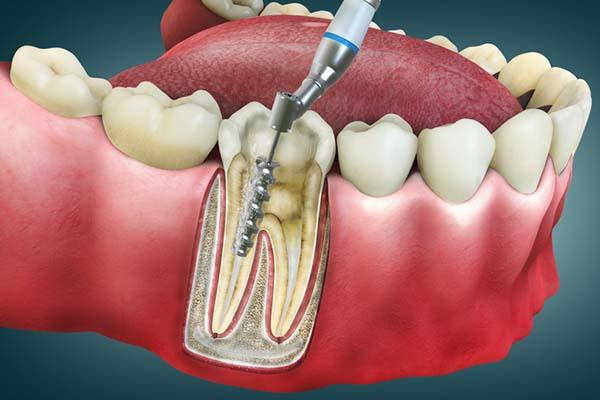A root canal is a dental procedure used to treat infection or damage within the pulp of a tooth. During the process, the dentist removes the infected or inflamed tissue, cleans and disinfects the inside of the tooth, and then seals it. This treatment helps relieve pain, prevent further infection, and save the natural tooth. Often, a cavity or tooth injury allows bacteria to reach the tooth’s inner layers, making this procedure necessary.
Preparing for Your Root Canal Procedure
The dentist begins by examining your tooth and taking X-rays to assess the extent of the damage. If the procedure is necessary, they explain the steps and answer your questions. They use a local anesthetic to numb the area and help you stay comfortable. If needed, they will use medication or safely administer nitrous gas to help your body relax.
Next, the dentist places a rubber dam around your tooth to keep the area clean and dry during treatment. This barrier prevents bacteria or debris from entering your mouth while the dentist cleans the tooth. They carefully remove the infected pulp to prevent further decay and preserve surrounding tissue. Taking these steps supports a smooth recovery.
Removing Inflamed or Infected Pulp
After preparing your tooth for the root canal, the dentist creates a small opening to access the pulp chamber directly. Using specialized tools, they remove the damaged pulp and clean the inner canals to eliminate infection. This part of the root canal procedure reduces bacteria and helps prevent future problems within the tooth. Careful cleaning is done to protect your tooth and promote long-term oral health.
Once the dentist cleans the canals fully, they shape them to prepare for the next phase. Shaping the canals allows the filling material to fit securely and block future bacterial growth. This sealing process protects your tooth and maintains oral health. Every step focuses on restoring and preserving your natural tooth.
Filling and Sealing the Tooth
After removing the pulp and cleaning the canals, the dentist fills the space with a safe, biocompatible material. This material supports your tooth’s internal structure and helps keep harmful bacteria away. It also plays a role in maintaining tooth stability after treatment. Careful filling provides long-term protection and supports proper tooth function.
Once the dentist fills the canals, they seal the opening to prevent moisture or bacteria from entering. If additional treatment is necessary, they place a temporary filling or crown until a permanent solution becomes available. A crown helps protect the tooth and restores full chewing ability. Each step of the process contributes to a successful procedure and keeps your tooth healthy.
Protect Your Smile Today
To complete the procedure, the dentist restores your tooth using a permanent filling or a custom-made crown for protection. This restoration allows you to chew and bite with confidence while helping your tooth regain its full strength and function. Proper care and good oral hygiene play a role in maintaining the tooth’s continued health over time. A well-restored tooth can last for many years without any complications.
Regular dental visits and consistent cleaning help keep the restoration effective and your smile healthy. Don’t hesitate to reach out to your dentist if you experience any discomfort or have questions. Taking action early helps prevent further damage and keeps your teeth strong. Talk to your dentist today to protect your smile and avoid costly problems in the future.

